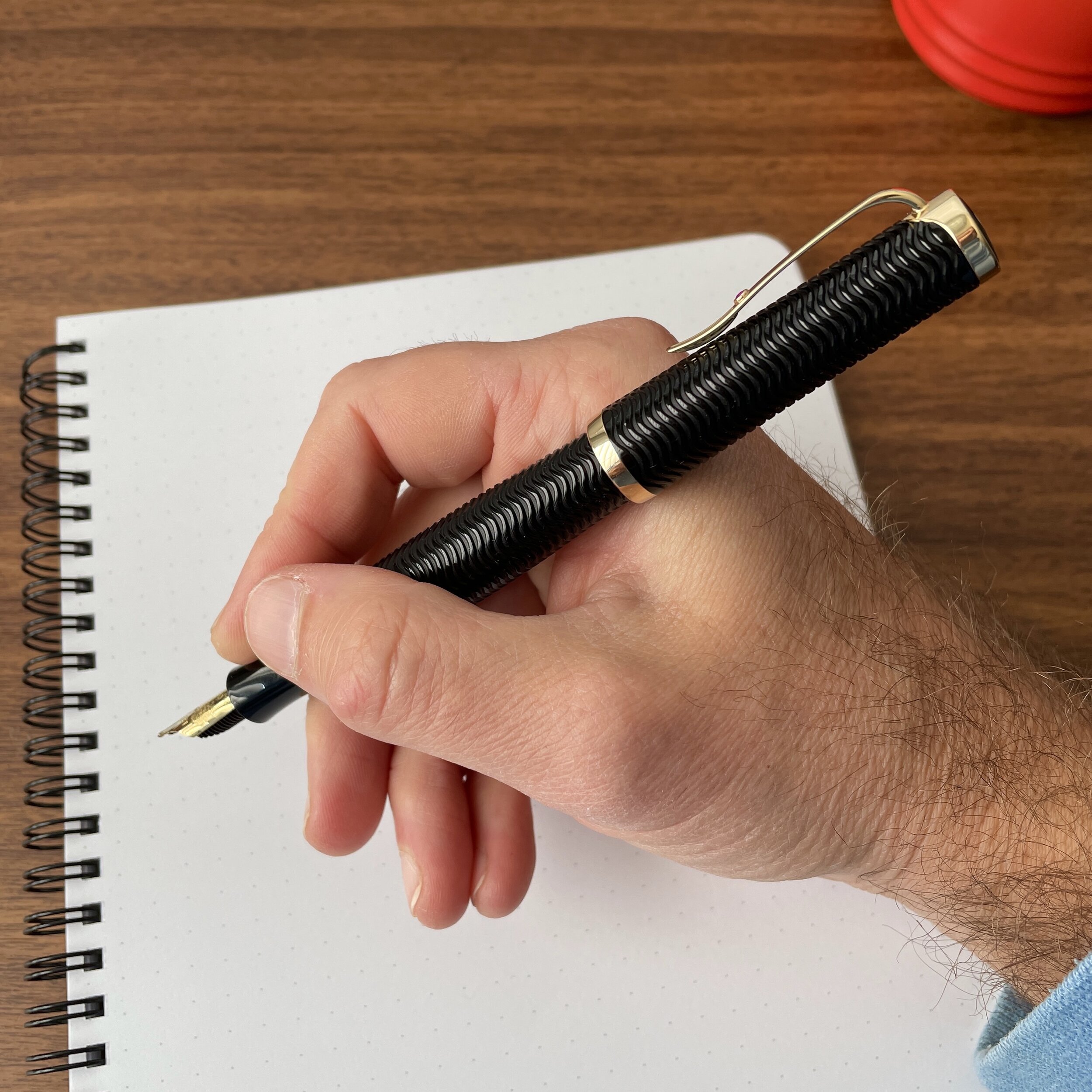Though the difference in price and hype is perhaps less pronounced than when the series was first introduced, few limited edition fountain pens attract the same level of attention as Montblanc’s annual “Writers Edition” releases. Typically, Montblanc releases a pen design inspired by the life and work of a particular novelist or poet. For example, this year’s “Homage to Victor Hugo” limited edition features a cap “decorated with gothic arches in relief, and the end of the clip, which is shaped like the clapper of a bell, recall[ing] the the bell ringer Quasimodo and the Bells of Notre-Dame.” Montblanc also engraves the writer’s signature somewhere on the pen, usually on the barrel.
The designs themselves either appeal to you or they don’t. Personally, I find most of the Montblanc Writers Edition pens either (1) too large, or (2) too gaudy, especially those released in recent years. My personal favorites are the older editions, and I have two in my collection: Virginia Woolf (2006), which I review here, and Charles Dickens (2001), which I plan to address in a separate post.
The snowcap on my pen has an off-white patina, and I don’t know whether this is by design or whether it has developed as the pen ages.
The Montblanc Virginia Woolf Writers Edition fountain pen is, to me, a perfect example of a Writers Edition pen that one can easily use for, well, actual writing. At roughly the size of a Montblanc 146, the pen itself is not too large. The Virginia Woolf edition also features a contoured barrel comfortable to use posted or unposted. When I’ve shown pictures of this pen in the past, readers have asked whether it’s a Bonheur, the so-called “pen for women,” and while it’s not, there is a resemblance, particularly with the cap. Due to the similarities, some regard this as a “gendered pen” unsuitable for a man to use, which is of course absurd.
Finally, I appreciate the understated manner in which Montblanc incorporated references to Woolf’s life and work into the pen’s design. The black barrel is engraved with a guilloche pattern, a reference to her novel “The Waves,” and the nib features an engraving of the two elm trees under which she is buried. Her signature appears subtly engraved on the gold piston knob.
The gold blind cap with signature.
Each Writer’s Edition features a custom engraved nib.
Takeaways and Where to Buy
The Virginia Woolf Writers Edition is not just one of my favorite Montblanc Writers Editions, it’s one of my favorite Montblancs in my current collection. I have a hard time leaving this one un-inked. I’ve previously written multiple times about how Montblanc stock broad nibs tend to be stubbish, and this one is no exception. It’s also tuned perfectly, which either shows how Montblanc pays closer attention to the Writers Edition nibs before they go out the door, or that older Montblanc pens in general were subject to better quality control practices. This particular pen wrote exceptionally well out of the box, without any skipping or “baby’s bottom” issues you sometimes see with stock Montblanc nibs.
One of the more polarizing design choices on this pen is the ruby on the clip. I like it, and find that it adds a touch of color to an otherwise very traditional black-with-gold-trim design scheme.
Unfortunately, the Virginia Woolf Writers Edition dates to 2006, so if you’re looking to pick one up you likely need to search the secondary market for used or N.O.S. (new old stock) items. I found this one during a Black Friday sale last year, where a European retailer (I believe La Couronne du Comte) had several older N.O.S. Writers Edition pens available for purchase. Today, many different options exist, but in the U.S. the retailers who typically have the largest selection at any given time are Chatterly Luxuries and The Pen Show. You can always take your chances on eBay, but be aware that Montblanc pens are heavily counterfeited and you should only purchase from a reputable seller. Personally, for pens in this price range (anywhere from $600 to $1500), I would only purchase online from known pen dealers with a reputation for standing behind their products, or else wait until pen shows resume and you can inspect potential acquisitions in person.
Disclaimer: I purchased the pen featured in this review with my own funds, for my own collection. I did not receive a discount on this purchase other than coupon codes available to the public. This post does not contain affiliate links.

